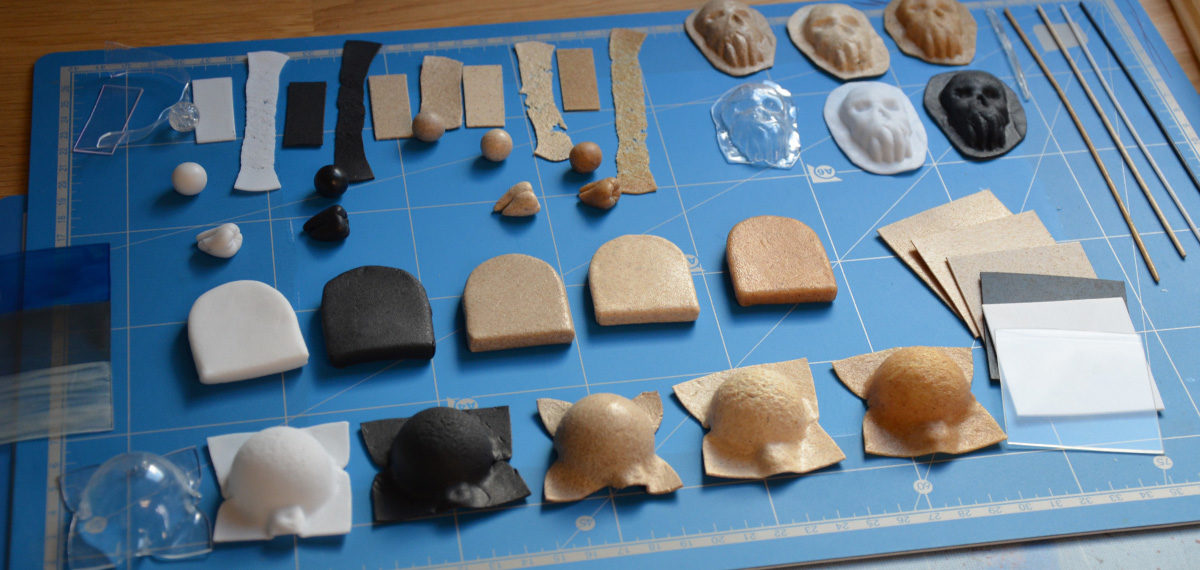
Thermoplastics : Worbla’s Finest Art, Black, Pearly, Meshed, Transpa Art, Cosplayflex…
Presentation
Thermoplastics, as their name suggests, are plastic materials that react to heat. Rigid when at room temperature, they become malleable when heated, allowing to form armor pieces, props and other elements involved in the making of a cosplay.
The range of Worbla products recently grew with their newest: the Pearly Art. Cosplay & Craft, a French shop of cosplay materials, offered us to test this newcomer. We took this opportunity to make a comparison of the different thermoplastics that we have used so far.
I will begin with a comparison on different points:
- Appearance and surface
- Elasticity and tear resistance
- Uses (on a foam base, molding, sculpture, details …)
Then, I’ll give you a summary for each material with its positive and negative points, and a classification with little stars to evaluate adhesion, ease of use, texture, elasticity, price, etc.
Comparison test
1. Aspect
We start off with a picture comparison of the appearance of these different thermoplastics when they are brand new.
On the left, you can see the front that looks smooth, and on the right, the back, that looks a little rougher. Small characteristic, the Worbla Meshed Art has a frame on its back, and Worbla’s Transpa Art has both sides looking the same.
We notice at first glance that Worbla’s Finest Art, Cosplayflex and Worbla’s Meshed Art have that speckled brown color. Particles are easier to see than on Black and Pearly, which have smoother surfaces.
Another point: sheen, Cosplayflex and Meshed have a brighter surface finish, while the Black and Pearly look slightly duller.
The Transpa Art, you will notice, is a little apart: it has no particles and is completely smooth and shiny.
This time, I applied samples of the same size on a small plastic sphere. We can see the texture once the plastic is stretched.
We can clearly see the difference in texture between the Worbla’s Finest Art / Cosplayflex which have a slightly cracked and rough texture, and the Black / Pearly Art whose texture is finer.
Worbla’s Meshed Art remains quite smooth and shiny, because of the mesh which composes it, it does not stretch and retains its initial texture well.
And a last test regarding the appearance of these different thermoplastics: I first heated the thermoplastic to remove its “brand new” look. Once the grain was visible, we applied silver bomb paint on the central part, and we primed + silver painted the right part.
For the primer part: we used a spray primer, with a first coat, followed by sanding with 240 grit paper, then a second coat, followed by sanding with 600 grit paper and finishing with 1000 grit paper.
For those who have never tested thermoplastics, be mindful that it is possible to have a perfectly smooth result with all these materials, it will just require more work depending on the one you use.
On Worbla Black or Pearly, a single coat of primer with a little sanding is enough to have a smooth surface, while the classic Worbla, Meshed and Cosplayflex will instead require 3 layers with sanding for a similar result.
PS: We used spray primer here, but it is also possible to use wood glue, white glue or gesso to smooth out these thermoplastics.
2. Elasticity / tear resistance
For this test, I took small 1.5 x 4 cm samples, which I stretched after heating them with the heat gun. I stopped when the first signs of tearing appeared.
Worbla’s Finest Art is quite elastic, and holds up rather well. For having used it many times, I know that it can be applied quite easily without tearing, even on parts with a very uneven surface.
The Cosplayflex is less elastic, contrary to what I thought. Maybe it’s a feeling that I had because of its gummy-ish texture when heated.
Worbla’s Meshed Art has very little elasticity because of its mesh. It also makes it extremely strong, as it was impossible for me to rip it by hand.
The Worbla Black and Pearly are roughly the same in terms of elasticity. I still noticed that the Black tore sooner, which I expected less. On the Pearly I stopped pulling when I saw that it was becoming too thin, on the Black I did not have time to see it coming that the edges were already torn. That said in the end it was very close.
The Worbla’s Transpa Art sets itself apart once again… Good elasticity, it does not tear, but writhes in all directions… It tends to retract when reheated.
3. Uses
My first test is about a very common use: applying the thermoplastic on a foam part.
The one difference that can be clearly noted here is the adhesion. While Worbla, Cosplayflex and Meshed stay on the foam, the Black and Pearly have a harder time sticking, as seen in the pictures where the tabs on the back are not fully closed.
In both cases, you will have advantages and disadvantages. A thermoplastic with good adhesion will be easier to apply on an existing base, it will stick better on the foam and better on itself in the case of a sandwich use (= a piece of foam placed between two sheets of thermoplastic). However, it will leave less room for error, since once it gets glued to itself it will be harder to undo.
On this last point, I noticed that the Cosplayflex left little room for error, as it has a very sticky texture and tends to stretch if you try to take off two parts that have caught on by mistake. It also tends to stick to the fingers, which is not always very practical.
Worbla Black and Pearly leave more room for error. It also means that if you want to set two parts together, it will take a lot more heat and pressure for them to adhere properly.
Second test: the molding. I used a silicone mold, in which I pressed a sheet of thermoplastic.
It was quite simple for Worbla, Black and Pearly. For the others it was a bit more complicated.
The Cosplayflex sticks to the fingers, so keep your fingers on the part while it cools down to avoid twisting it.
Meshed has little elasticity (because of its mesh), so it is more difficult to work with. When you press on one side it tends to rise on the other. So be careful to keep the sheet pressed in the whole mold. It is also necessary to use a larger piece than for the stretchable thermoplastics.
The Transpa Art is a lot more complicated to use. It does not stay much in place, needs to be very hot to work with (burns your fingers real quick too), then it cools very quickly as well, leaving little working time in between. So you have to re-heat it several times while being careful not to overheat it because it also tends to bubble up…
In terms of effect, the Worbla and Cosplayflex remain quite granular, which will require a little more work in terms of finishing / sanding (not always easy when there are details).
The Black and Pearly have very fine details, but be careful if your piece has a lot of details or uneven surfaces because those materials are more likely to tear. Do not hesitate to put additional pieces at the back to plug any hole.
The Transpa Art misses quite a lot of fine details, but the overall shape is there.
And finally, the pleasant surprise of the day: the Meshed took the finest details of them all (even better than the Black and Pearly!), and its surface remains very smooth and shiny.
Let’s see what happens when it comes to carving details, starting with a small ball.
The rendering is very smooth on the Worbla Black and Pearly, then comes the Cosplayflex slightly shinier than the classic Worbla.
This use is not suitable for Meshed, since its mesh appears on the surface.
As for Transpa Art, the material does not blend well with itself. We can distinguish the folds inside, and it is quite difficult to smooth the joints out completely. However, it can create pretty cool effects.
Now another feature that is commonly used for small details: the small stick
All tests were performed on samples of the same size.
Here both Black and Pearly stand out, allowing us to make very thin stick with a really smooth surface.
We can also make them out of Worbla and Cosplayflex and get decent results, even if they remain thicker than those in Black and Pearly.
As for the Worbla’s Transpa Art… it’s hard to get anything close. It shrinks when re-heated, so it is quite difficult to get a long regular stick. Or you have to cut a very long and thin piece right away and then try to round it up. In any case, it is a rather capricious material that is hard to form anything out of.
I did not perform the test on the Meshed, because it does not seem very suitable for this use (the mesh that becomes visible is not good).
Let’s continue the tests with a small tooth made using carving tools.
This time I left out the Meshed and the Transpa Art.
The four materials work pretty well, but the Black and Pearly allow for more accuracy in the end result. In addition, their uniform color helps visualize the details, the elements to carve and the defects (traces of nails for example) better.
Finally, a last test that might be useful… how easy is it to transfer a template or draw the patterns on your part!
I tried to write on these thermoplastics with (from top to bottom) a ballpoint pen, a pencil, a felt pen and a marker.
Nothing to report on Worbla, Cosplayflex, Meshed Art and Pearly, except that the felt had trouble drying and made some smudges.
On the Black, however, it’s difficult to see the lines outside of the one made in pencil, and you need to have good lighting!
On Transpa Art, the pencil does not mark, the ballpoint pen sometimes has trouble because the surface is very smooth. However, it is possible to remove the traces of pen by rubbing it, rather convenient to erase and start over.
Summary by material
1. Worbla’s Finest Art
Advantages:
- In my opinion, this is the easiest to start with. If you are a beginner with thermoplastics, this is the one that I advise you to use.
- It has a good elasticity, which makes it easy to work with. If your pieces have uneven surfaces, it will tear less than Worblas’ Black Art or Pearly Art.
- Its glue is efficient and holds well on foam or on itself.
- A widely used material, is easily found online.
Disadvantages:
- The big negative is its texture. It is rather rough, which will require more sanding / finishing work before being painted.
Notes:
Although its rough texture is considered a disadvantage, in some cases it can prove useful, like for the engravings of my Vorpal Blade where it gives it a nice effect.
2. Cosplayflex
Advantages:
- Rather similar to Worbla, it is quite easy to handle.
- Its glue is efficient and holds well on foam or on itself.
- With its lighter color and it’s brighter aspect than Worbla, it’s easier to see flaws on your part, especially bubbles.
Disadvantages:
- Like Worbla, its texture is quite rough, especially when stretched.
- It is harder to find than Worbla, especially outside of Europe, where its price can quickly take off from the few suppliers who sell it.
Notes:
It has a “gummy-ish” texture when heated. You must also be careful because it sticks more to your fingers than Worbla.
3. Worbla’s Meshed Art
Advantages:
- Very sturdy, it does not tear thanks to the mesh which composes it. Ideal for parts that must withstand tension or tear (joints, parts without foam reinforcement, fasteners …).
- Very good molding capabilities, it takes mold details very well.
- Its glue is efficient and holds well on foam or on itself.
Disadvantages:
- The downside of the mesh is its lack of elasticity. So you need a little more surface to work with than other thermoplastics that can stretch.
- Unlike other thermoplastics, it’s impossible to recycle without losing its mesh (most thermoplastics are recycled by heating the scraps and passing them in a pasta mill which is not doable here).
Notes:
This is the pleasant surprise of these tests. I never had the opportunity to use it on our costumes but I plan to. Its mesh and its fairly smooth texture make it a good candidate to make pieces with large areas (armor bases, shields, etc.) but also for fastening D-rings / buckles, or similar fasteners.
4. Worbla’s Black Art
Advantages:
- Its very fine texture requires less (if at all) primer / sanding work before it can be painted.
- Its black color. It can be used as is on a lot of parts, without having to paint it. Depending on the case, with dark armor for example, we will see less wear due to friction on the parts, or if the paint flakes.
- Perfect for crafting details and sculpting.
Disadvantages:
- Unlike Worbla, Cosplayflex and Meshed, you cannot see when it’s hot enough to work with. This makes its use more complicated and it is easier to burn yourself.
- Does not stick very well to foam or to itself. It tends to loosen when reheated. To make it stick on itself it will be necessary to heat it and apply more pressure than with other thermoplastics.
- It is not easy to draw patterns or landmarks. For now the best I found is to draw on it with a pencil, but you still need good lighting to see the lines.
Notes:
My favorite thermoplastic as of right now, a little harder to take in hand than classic Worbla, it requires a little training to tame. That said, once you’re used to it, you can make smooth and very detailed pieces. Its black color is also a great upside when you don’t have time to touch up your cosplay between each convention (it’s more discreet).
5. Worbla’s Pearly Art
Advantages:
- Its very fine texture requires less (if at all) primer / sanding work before it can be painted.
- Perfect for crafting details and sculpting.
- Its white color makes it possible to draw on it very easily.
Disadvantages:
- Unlike Worbla, Cosplayflex and Meshed, you cannot see when it’s hot enough to work with. This makes its use more complicated and it is easier to burn yourself.
- Does not stick very well to foam or to itself. However, I feel that it adheres a little better than the Black. We’ll see.
Notes:
This newcomer is rather promising. I really like Worbla’s Black Art, and this one is quite similar. Very fine, perfect for sculpting like his big brother, it also has the characteristic of being white, which can be very interesting for the sculpture of teeth, bones or other white objects.
6. Worbla’s Transpa Art
Advantages:
- Its transparency, very practical when used with LEDs.
- Its very smooth texture.
- Very resistant, does not tear.
Disadvantages:
- It requires a higher working temperature (around 120 °), so expect to burn your fingers more than once.
- Cools very quickly, which makes its work time very limited.
- Quite complicated to work with and handle, it twists and deforms easily, retracts to its original shape when reheated…
- Tends to bubble when heated too much.
Notes:
It is not suitable to make a visor. It’s Injection molded so it’s not optically transparent.
It is easier to cast it on an object than in a negative mold.
For cool effects, do not hesitate to paint it with stained glass paints or to sand the inside to better diffuse the light.
7. Recap table
| Worbla’s Finest Art | Cosplayflex | Worbla’s Meshed Art | Worbla’s Black Art | Worbla’s Pearly Art | Worbla’s Transpa Art | |
|---|---|---|---|---|---|---|
| Melting point | 80/90°C | 90°C | 80/90°C | 80/90°C | 80/90°C | 120°C |
| Texture | ||||||
| Adhesion | ||||||
| Ease of use | ||||||
| Elasticity | ||||||
| Resistance | ||||||
| Flexibility | ||||||
| Price (EU, Swiss, USA for a 150 x 100 cm sheet) | 50€ 75.- $86 | 54€ 70.- $79 < $105 | 53-54€ 75.- $82 | 53-54€ 78.- $88 | 53-54€ 78.- $91 | 52€ < 59€ 75.- $88 |
Summary
Worbla’s Black Art is my favorite thermoplastic for the moment because of its fine texture and black color that I find quite suitable for dark armor or metallic pieces. Rather versatile, it can work on large surfaces as well as small carved or molded parts.
That said, Worbla’s Pearly Art has very similar properties, except for its white color that will certainly be very useful depending on the parts to be made (small teeth or bones for example).
These two thermoplastics are however kind of difficult to handle, so if you are a beginner I strongly advise you to start with our good old Worbla’s Finest Art. It is easy to see when it is hot, it is more elastic, has a good adhesion and you will already be able to make very nice pieces with it.
To see these materials in action, do not hesitate to take a look at some of our making-of:
https://www.blackowlstudio.com/en/warsong-commander-making-of/ (Worbla’s Finest Art)
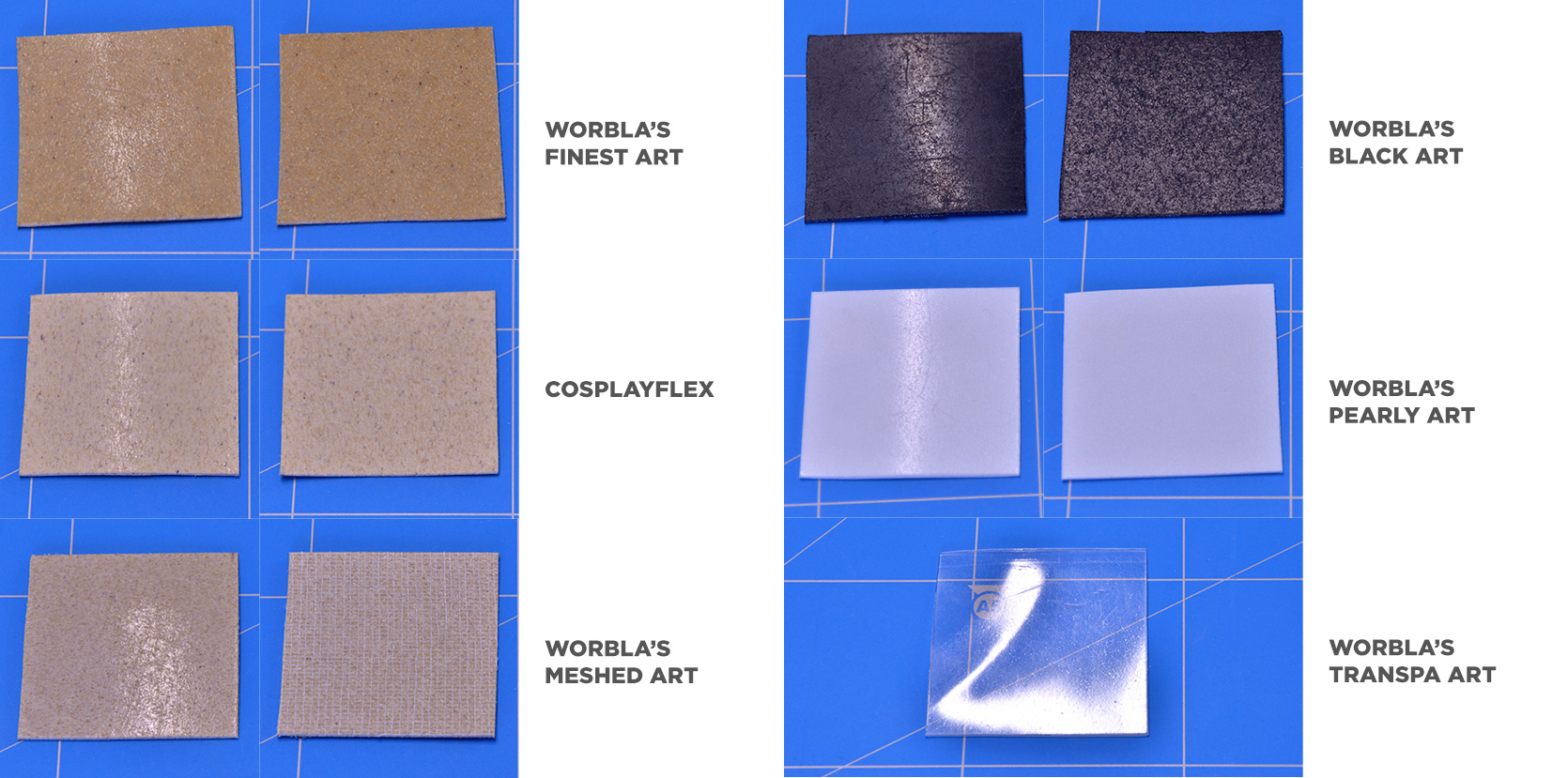
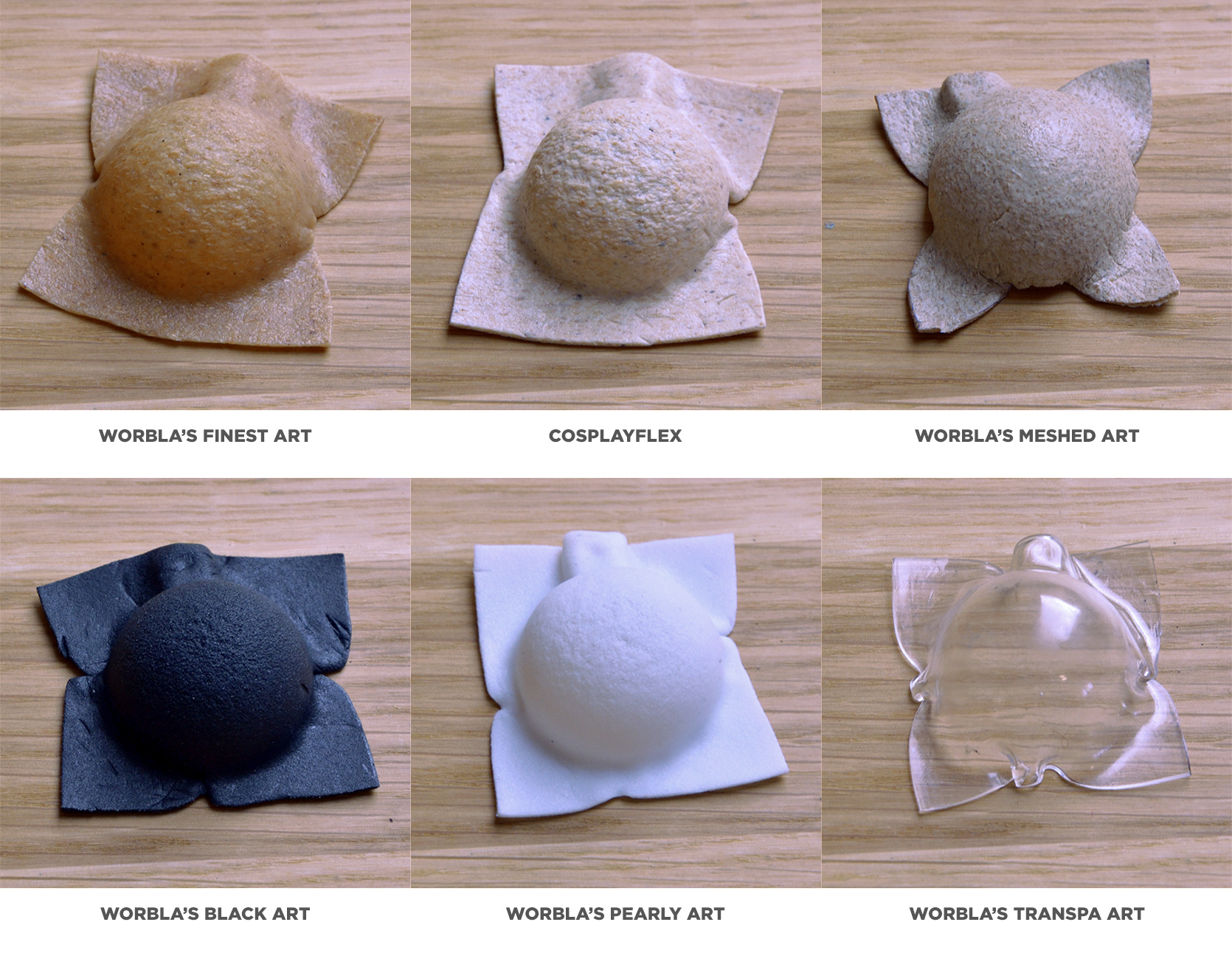
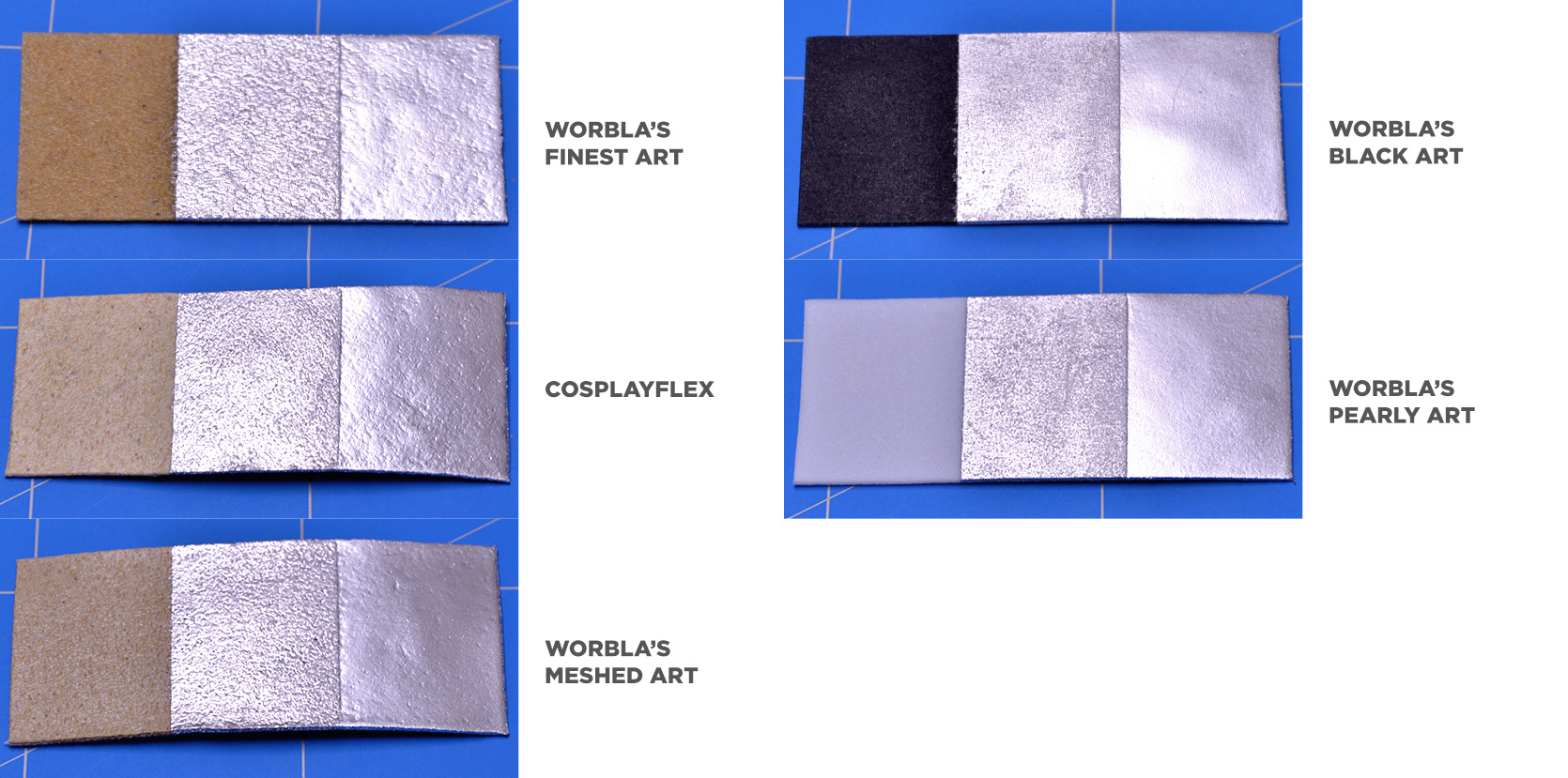
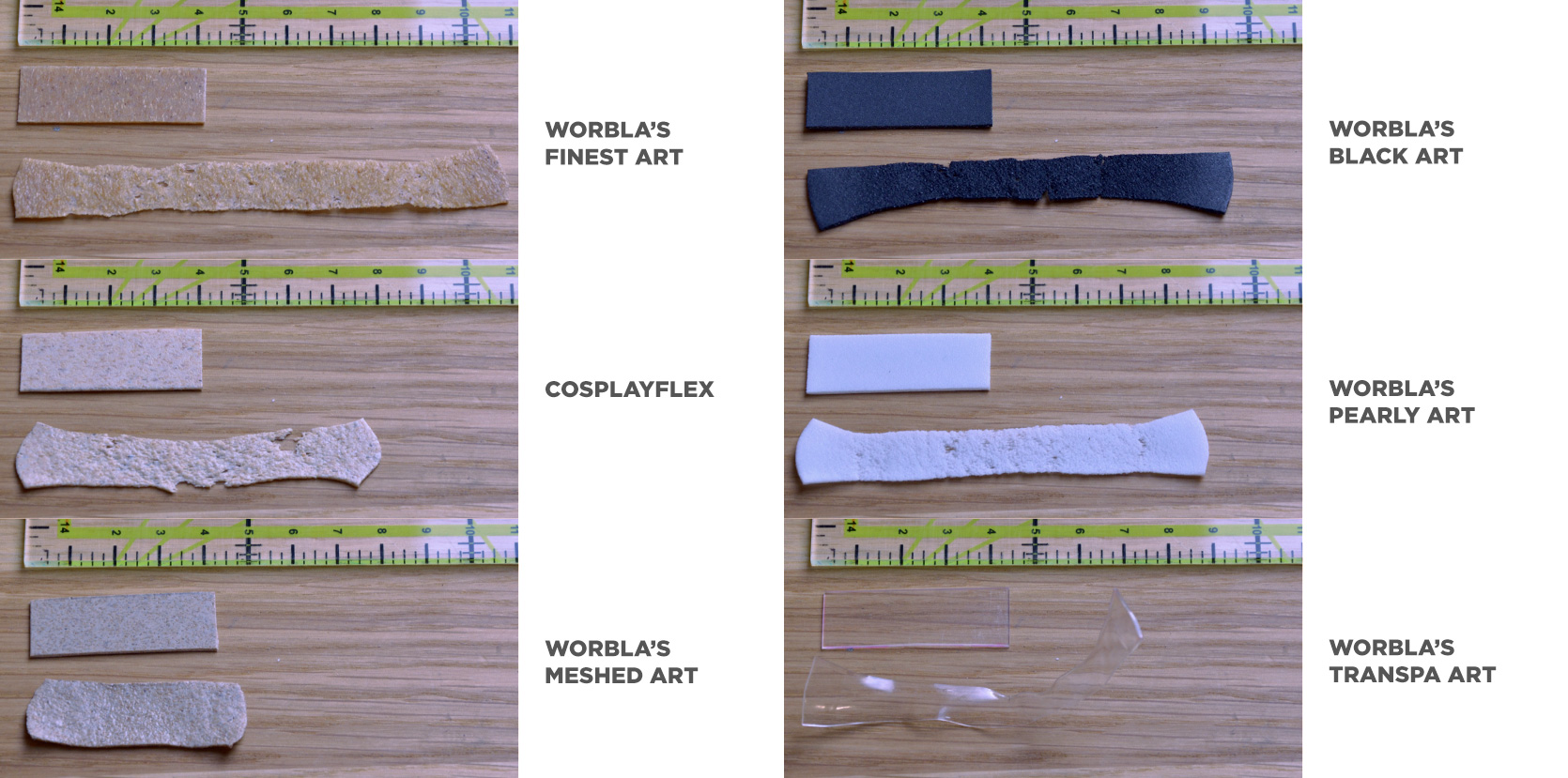
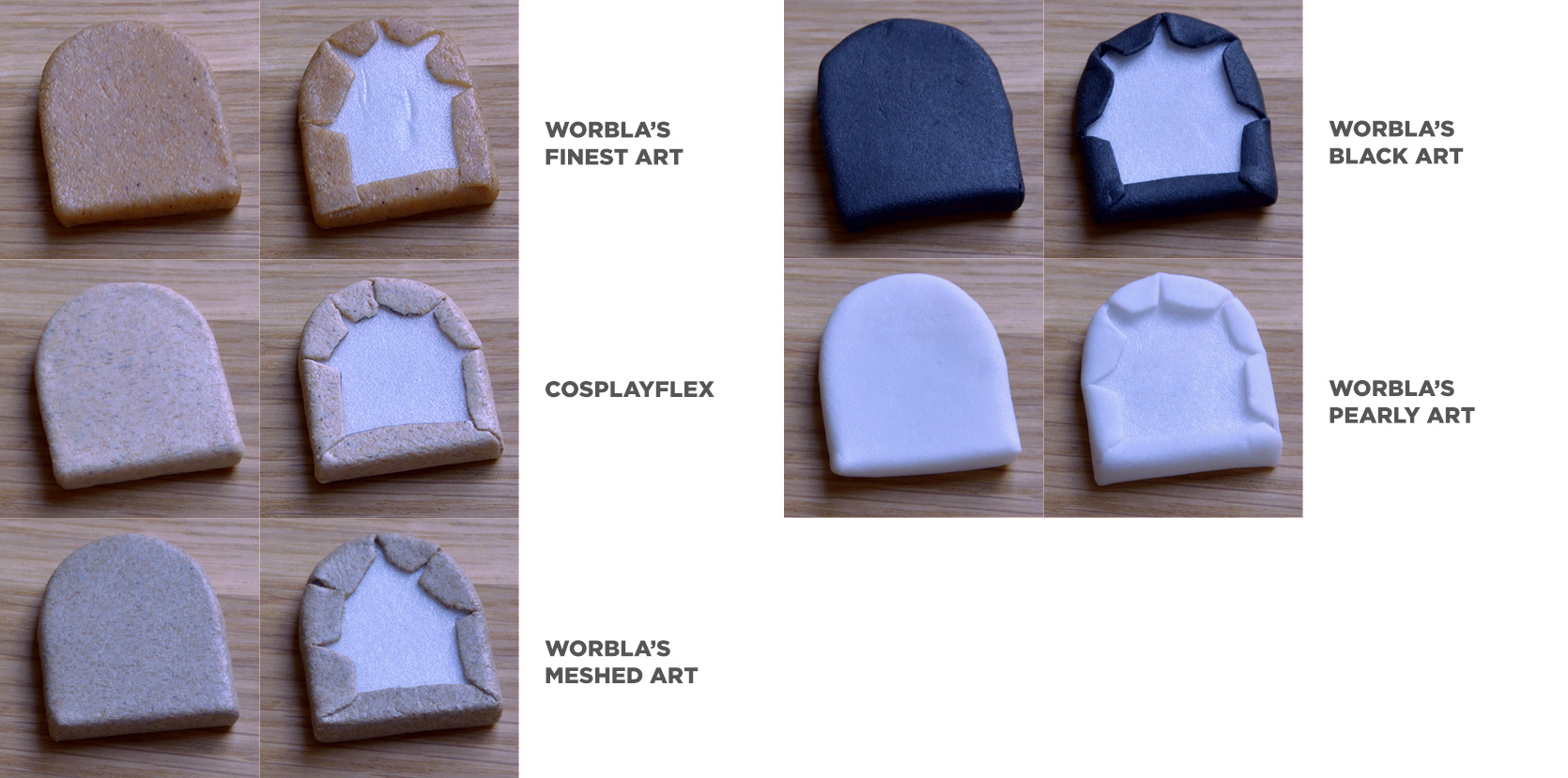
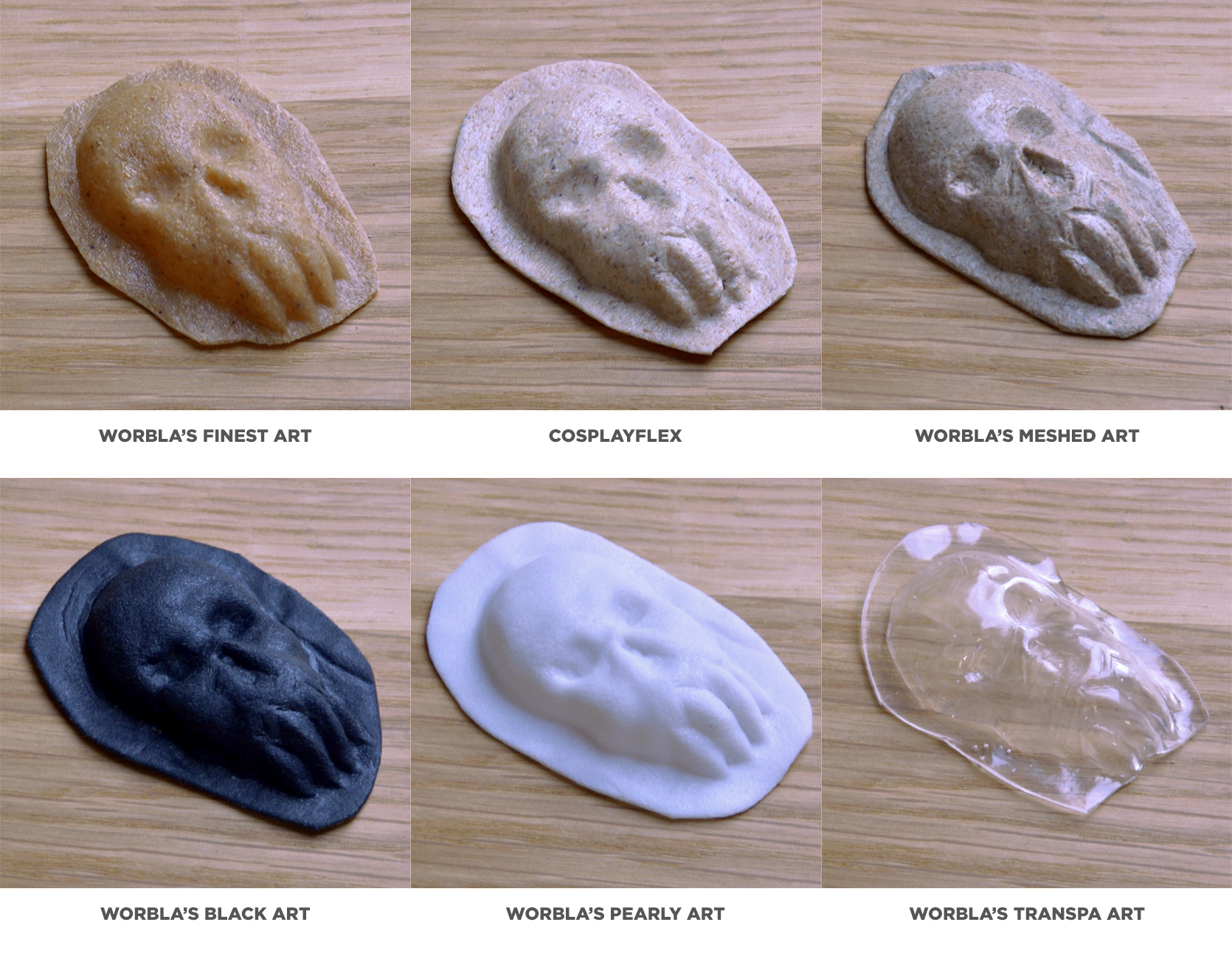
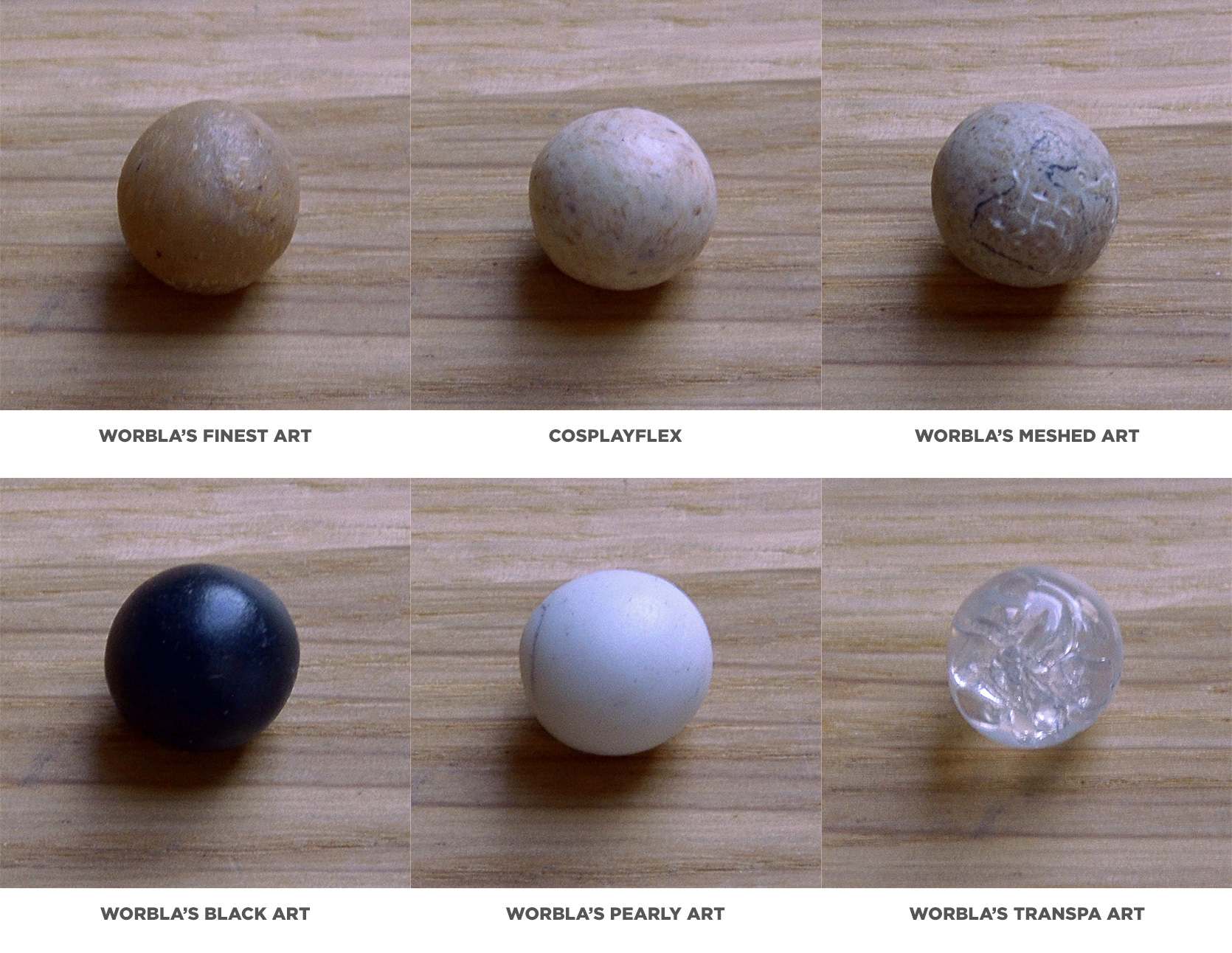
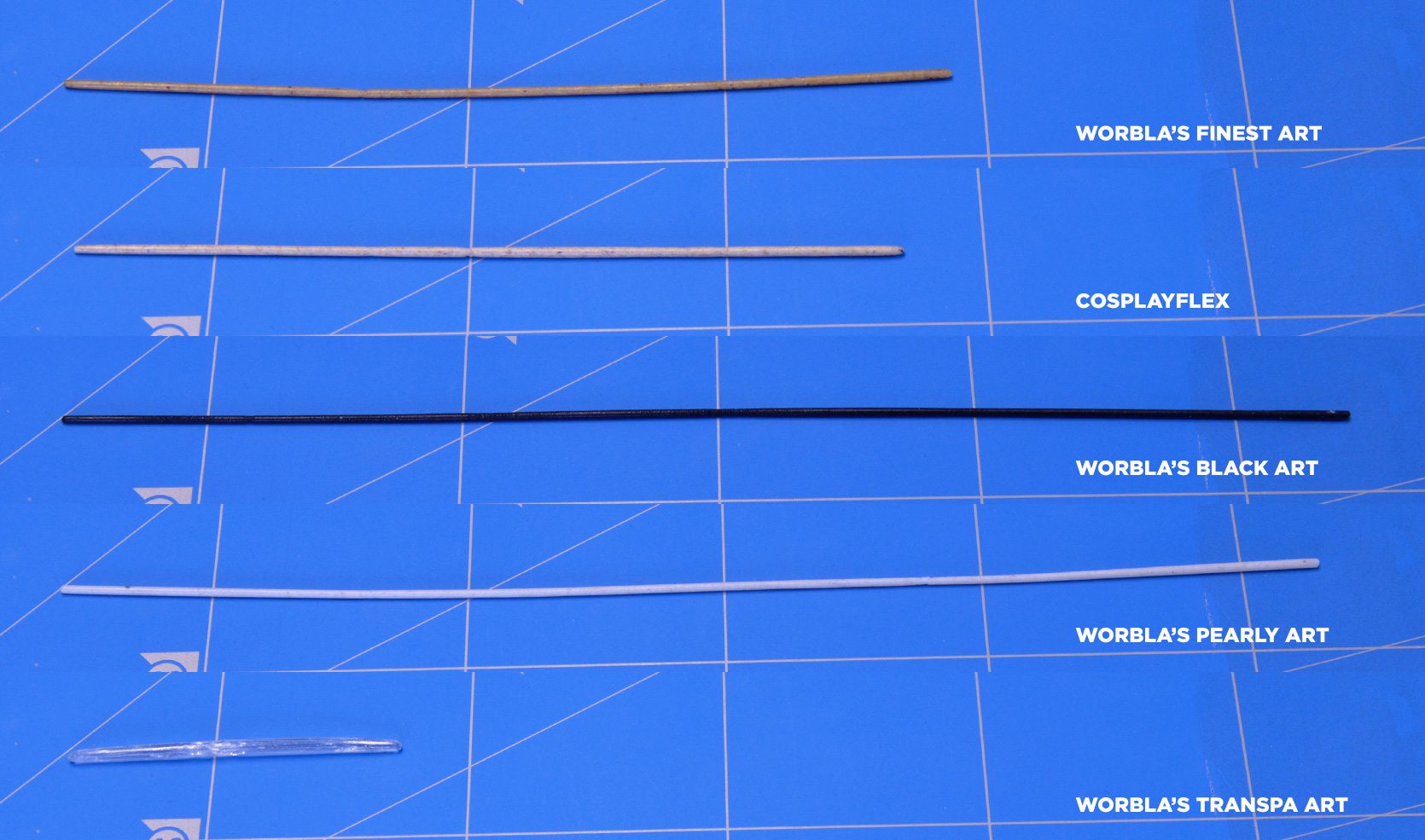
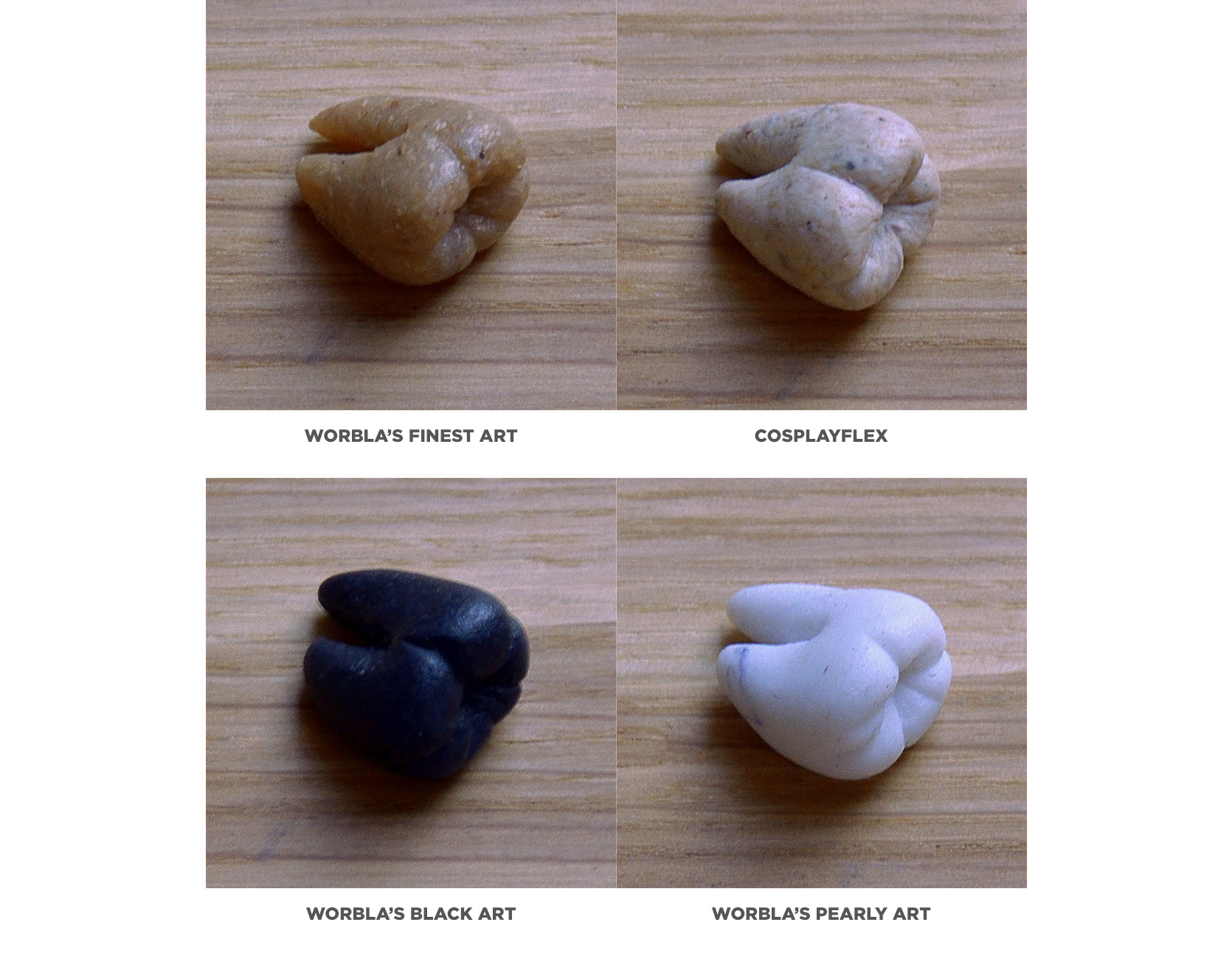
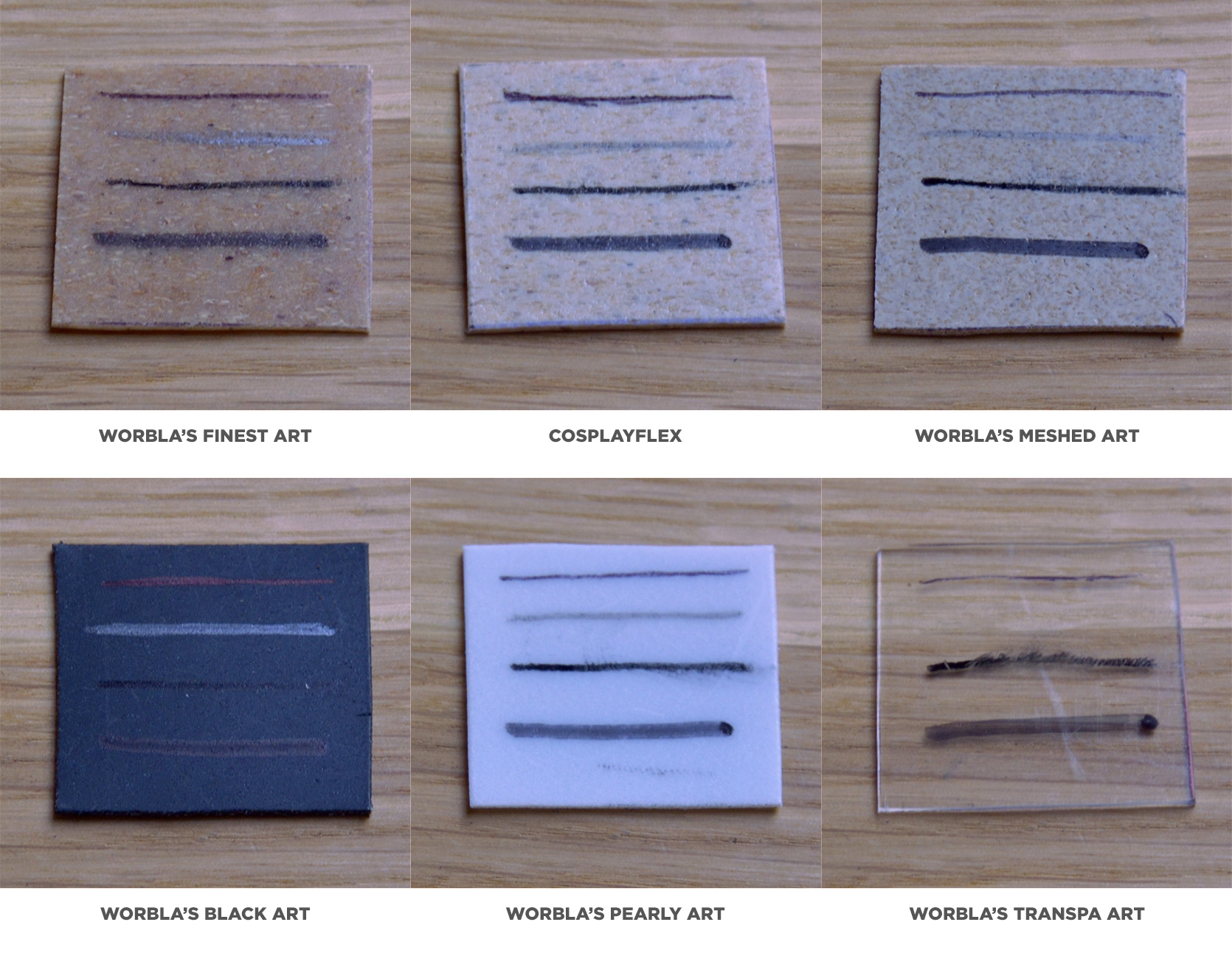
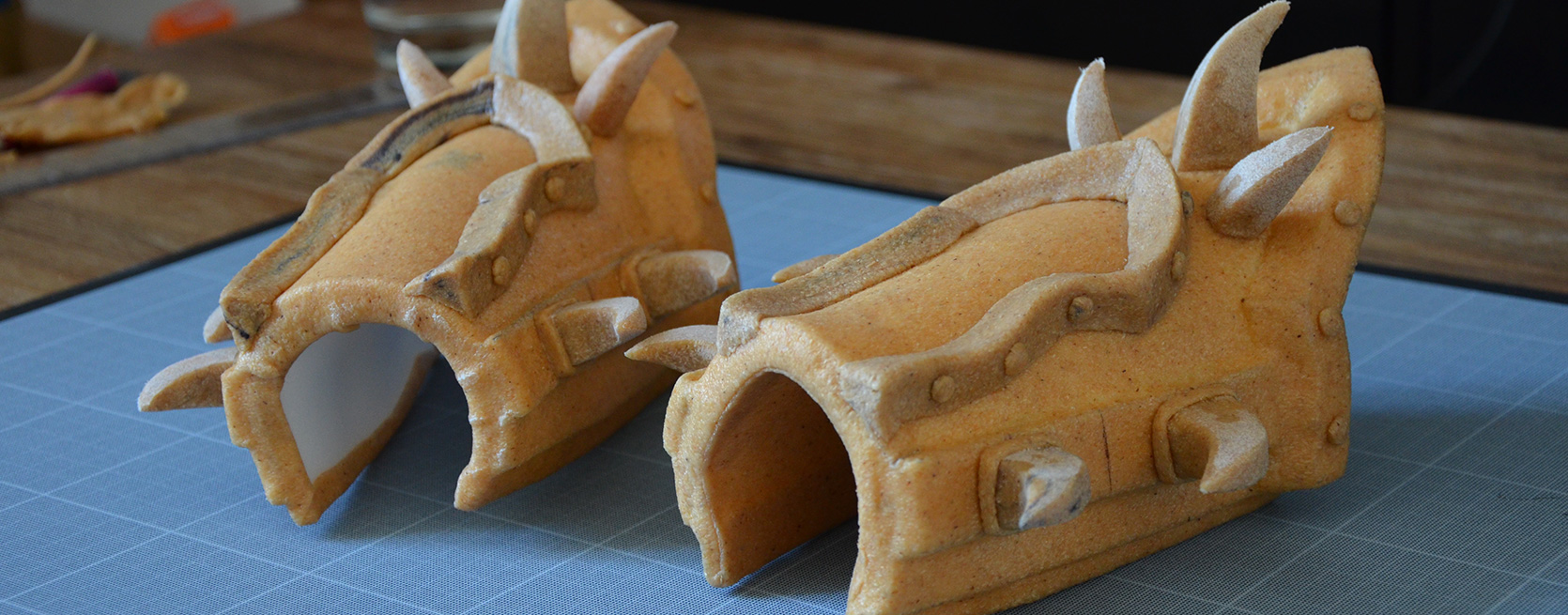
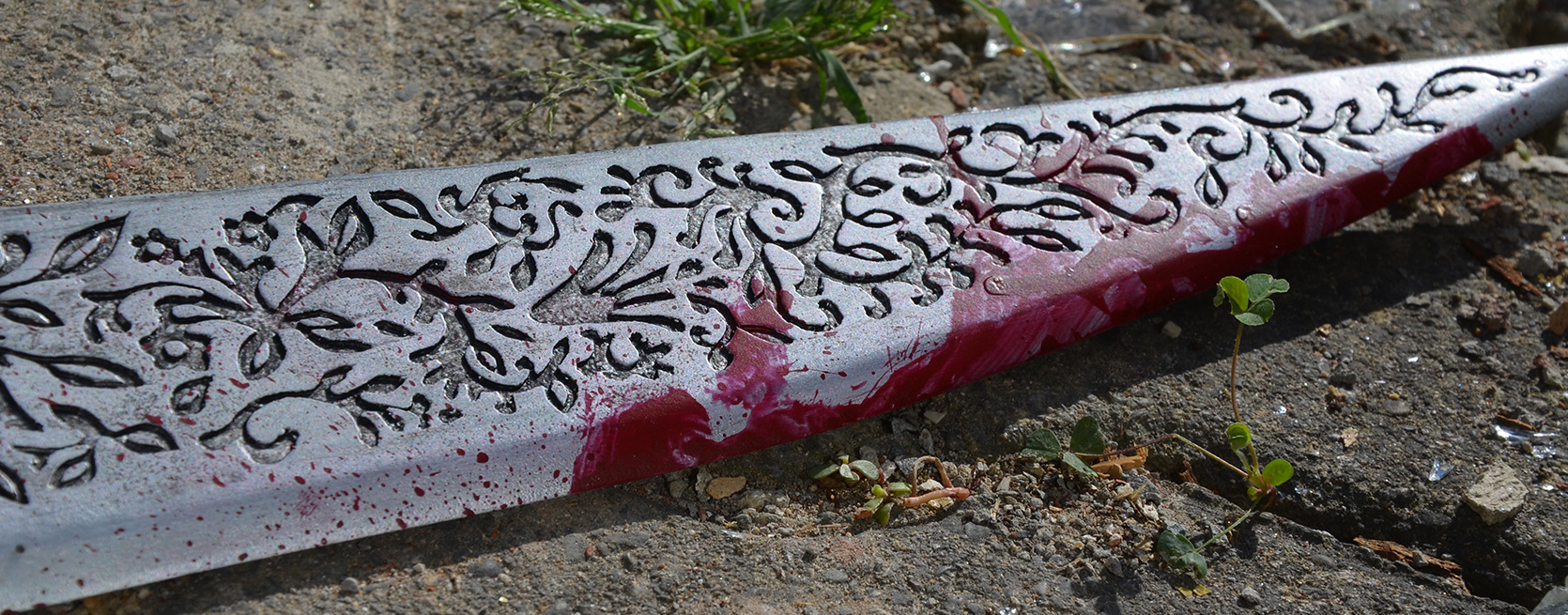
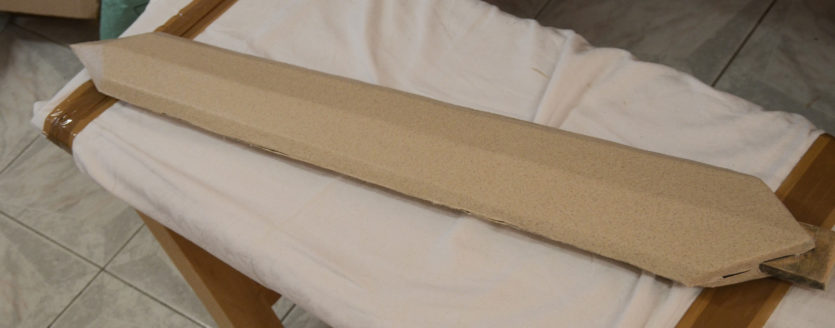
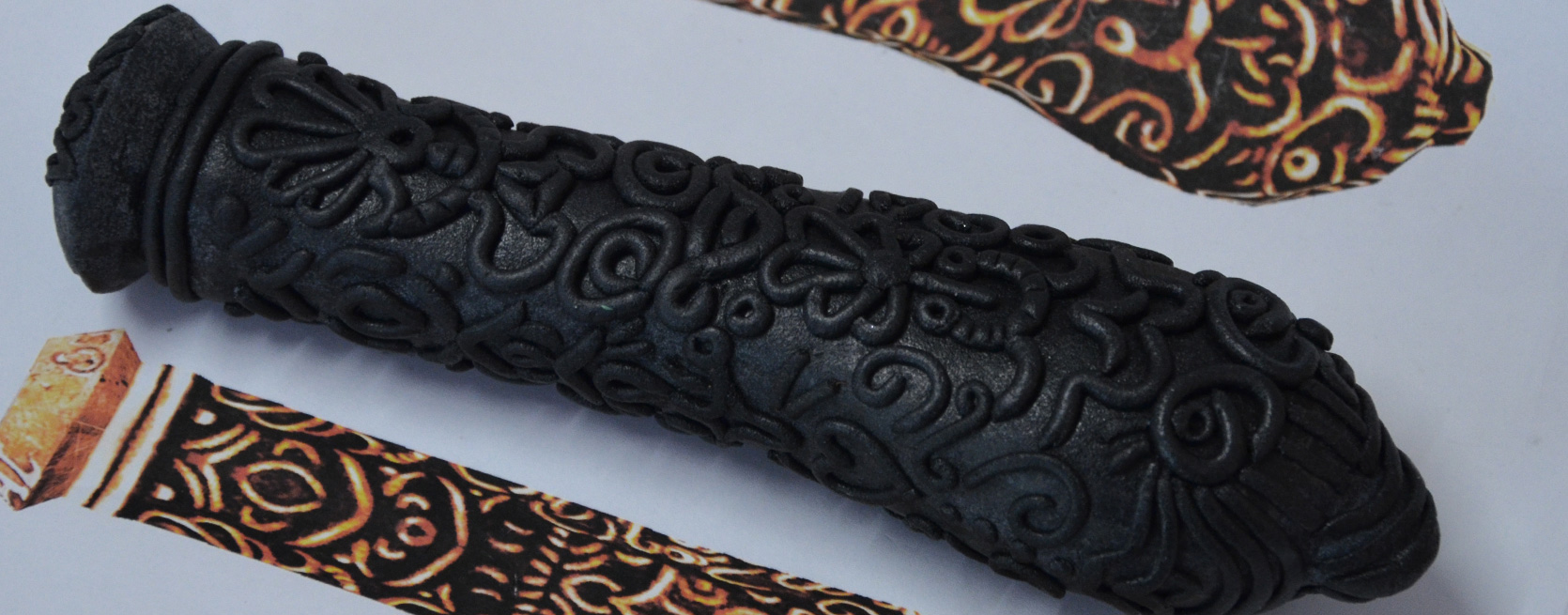
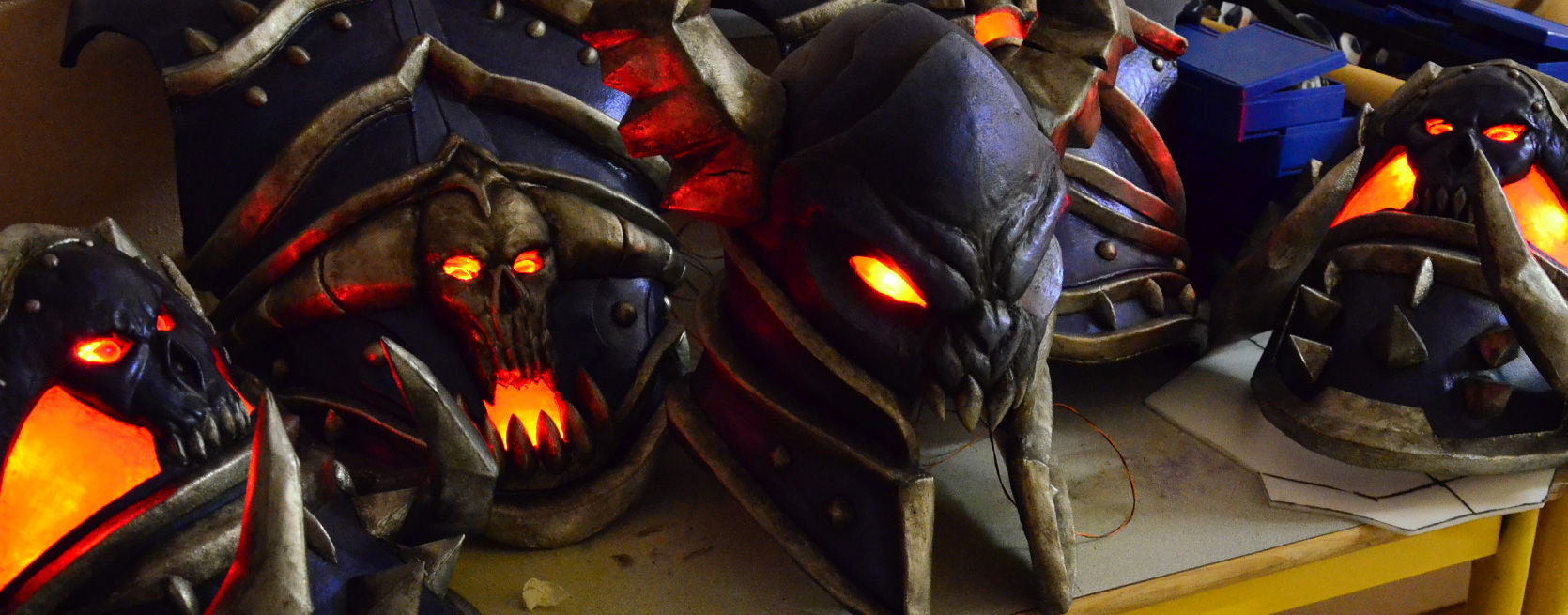
Edelgard
So useful! Thank you for the detailed comparison.